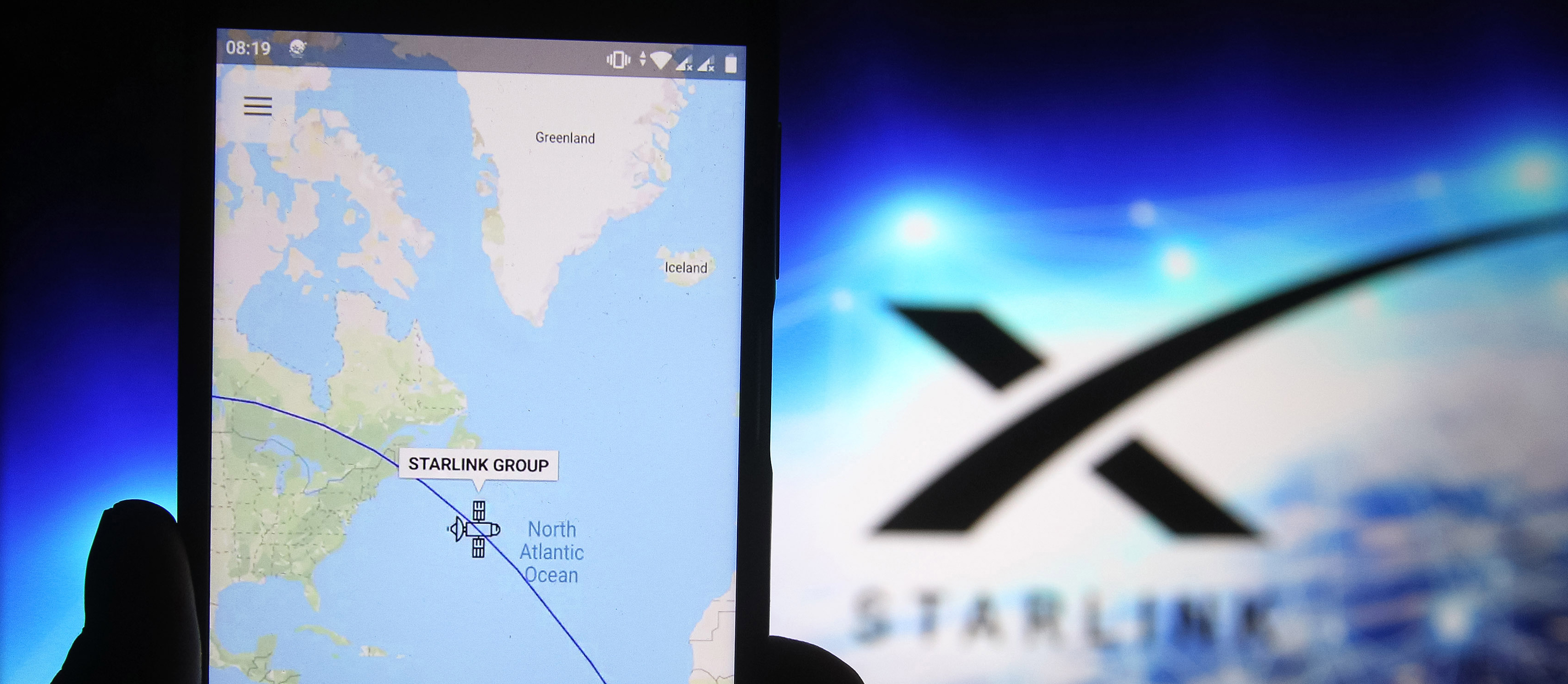
NASA and SpaceX have signed a special information-sharing agreement to ensure Stalink satellites do not collide with other objects floating around Earth's orbit.
The 13-page agreement takes the standard Conjunction Assessment (CA) process and allows deeper cooperation between the National Aeronautics and Space Administration and SpaceX. It's a non-reimbursable agreement, meaning that it's designed to be mutually beneficial and not for-profit.
- Live in rural America or the U.K.? Read our Starlink review
- Starlink satellite internet coverage, cost and everything you need to know
- Plus: Elon Musk promises to double Starlink satellite broadband speeds this year
The agreement is structured around NASA maintaining its planned trajectory with Starlink satellites set to automatically maneuver around NASA objects. In rare instances in which Starlink cannot maneuver, then NASA will do what it can to avoid collision.
"The veracity and timeliness of the communications between both parties is critical to maintain safe on-orbit operations," as stated in the agreement.
Because Elon Musk plans on sending 12,000 satellites into space to create this massive low-Earth orbit (LEO) satellite constellation, ensuring various trajectories don't cross paths will be critical towards its survival. At the moment, SpaceX has sent 1,325 Starlink satellites into orbit.
NASA will also provide technical support to Starlink, especially in regards to limiting photometric brightness, which is the reflectivity of a flat or uniform surface.
SpaceX must inform NASA if Starlink satellites are within five kilometers below or above the International Space Station, or ISS. This, of course, is to prevent collision with the ISS, which would be dangerous as humans could be on board.
Sign up to get the BEST of Tom's Guide direct to your inbox.
Get instant access to breaking news, the hottest reviews, great deals and helpful tips.
NASA is placing much burden on SpaceX to ensure collisions do not occur. And considering every single LEO satellite constellation company has gone bankrupt, safety and profitability is on the forefront of Elon Musk's mind.
At the moment, Starlink only gives acceptable coverage to those in upper latitudes in North America, specifically between 44 and 52 degrees north, which includes all of the states of Washington, Montana and North Dakota, most of South Dakota and Minnesota, and large parts of Canada. But Starlink is hoping to cover most of the world by the end of 2021. SpaceX expects completion of the Starlink internet constellation by sometime next year.
Imad is currently Senior Google and Internet Culture reporter for CNET, but until recently was News Editor at Tom's Guide. Hailing from Texas, Imad started his journalism career in 2013 and has amassed bylines with the New York Times, the Washington Post, ESPN, Wired and Men's Health Magazine, among others. Outside of work, you can find him sitting blankly in front of a Word document trying desperately to write the first pages of a new book.
-
cannongray SpaceX will maneuver the Starlink satellites, autonomously or manually, to ensure uninterrupted operation of NASA's scientific probes and other vehicles belonging to it. In turn, NASA promised not to take any action to prevent convergence without a request from SpaceX with the aim of avoiding dangerous situations.Reply -
DinkSinger There are a couple of mistaken ideas expressed in the article. First, there aren't any "objects floating around Earth's orbit." We get that impression because of images of people and objects appearing to float in the zero gravity within spacecraft and the ISS but the near zero gravity is a result of them being in freefall at a very high velocity. For example Starlink satellites orbiting at 550 km are moving at more than 7.585 km/s (16,967 mph). It is those velocities that make collisions catastrophic.Reply
Second, SpaceX has received approval from the FCC for a total of about 12,000 satellites but most of them would not be in low earth orbit (LEO). The application for 7,518 of them is for very low earth orbit (VLEO). One advantage of very low earth orbit is that anything at those altitudes would leave orbit and demise in the upper atmosphere in just weeks when it is not actively station keeping. This does not just apply to the satellites but also to any junk.

